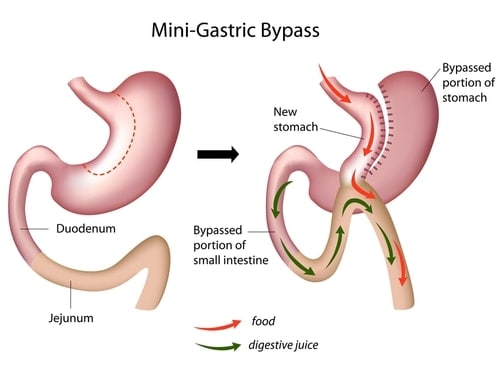
Procedure:
It is also sometimes called Omega Loop Gastric Bypass or One Anastomosis Gastric Bypass.
Surgery is performed under General Anaesthesia using laparoscopic (keyhole) techniques through 5 small incisions in the abdomen.
The surgery is simpler and safer than the Roux en Y but the incisions are the same. The stomach is divided into a long thin pouch, and then a loop of bowel is brought up and joined to it. The main benefit of this procedure over the traditional RYGB is one small bowel anastomosis rather than two.
Digestive juices travel without food to act on until they come to the loop up at the stomach.
Food digestion only happens in the lower part of the small intestine. Food will now move through the new tube stomach into the attached loop of jejunum.
A potential disadvantage is that if ‘reflux’ occurs it will contain some digestive juices that can damage the oesophagus. It is therefore not ideal for patients with severe reflux, nor for smokers.
This surgery is increasingly performed as it has less problems of obstruction and acid reflux than a sleeve, with more powerful weight loss and diabetes control.
Like all bypass procedures, there is a need to take multivitamins long term and to have blood tests every year.
Ask Dr John Jorgensen which procedure is best suited to your situation.
